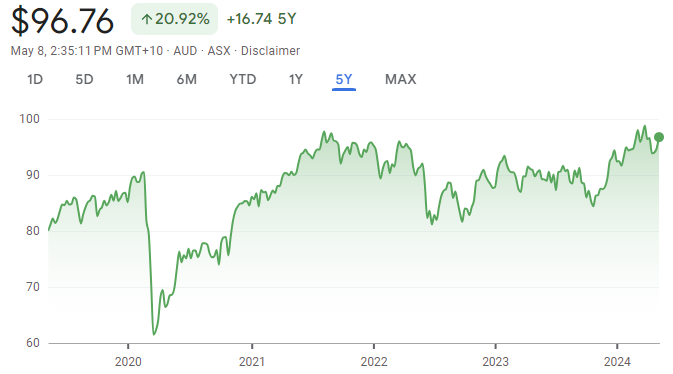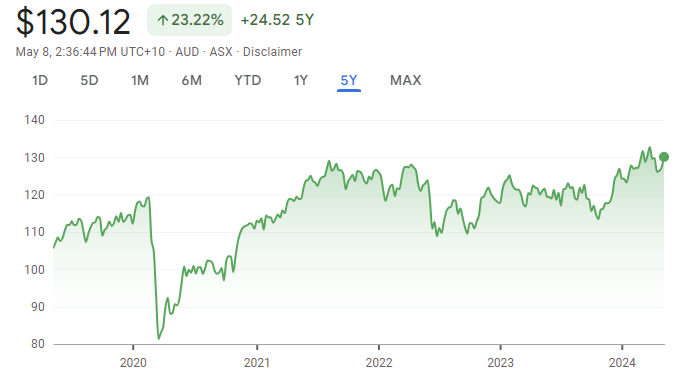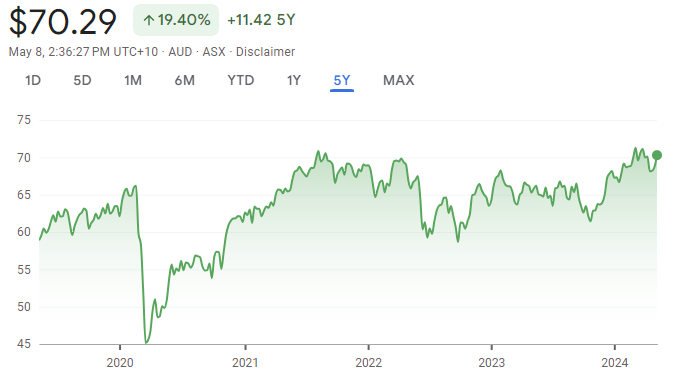Do Index Funds Pay Dividends in Australia?

Dividends are payments made by companies to their shareholders, typically from their profits. For investors, dividends are significant because they offer a source of recurring income beyond potential price appreciation of the shares. They are a sign of a company’s financial health and its commitment to returning value to shareholders.
Dividends are payments made by companies to their shareholders, typically from their profits. For investors, dividends are significant because they offer a source of recurring income beyond potential price appreciation of the shares. They are a sign of a company’s financial health and its commitment to returning value to shareholders.
What are Index Funds?
Index funds are investment funds that aim to replicate the performance of a specific index, such as the S&P 500 or the ASX 200. These funds hold all or a representative sample of the stocks in the index they track.
The primary role of index funds in investment portfolios is to provide broad market exposure, diversification, and lower management fees compared to actively managed funds. Therefore, they are popular among investors seeking an investment that mirrors the market’s performance.
Concept of Dividend Payments in ETFs
Exchange Traded Funds (ETFs), including those that function as index funds, distribute dividends to their investors.
The dividends distributed by ETFs originate from the dividends paid by the individual assets within the fund. For instance, if an ETF tracks an index that includes several dividend-paying stocks, the dividends paid by these stocks are pooled together. The ETF then distributes these earnings to its shareholders in the form of dividend payments. This distribution can happen periodically, such as quarterly or annually, depending on the specific ETF’s policy.
The process allows investors in ETFs to benefit from the dividends of multiple stocks through a single investment, simplifying the dividend collection process and enhancing the income-generating potential of their investment portfolio.
Types of Dividend Paying Index Funds for Australian Investors
- Dividend Exchange-Traded Funds (ETFs): Dividend ETFs are popular among investors looking to earn income through dividends. These funds aggregate income from various stocks, aiming to distribute a portion of this as dividends to the ETF holders. They generally focus on equities known to pay high and reliable dividends.
- High Yield ETFs: These ETFs target companies that offer higher dividend yields compared to the average market. The objective is to provide investors with higher income, which can be particularly attractive in a low-interest-rate environment.
- Real Estate Investment Trusts (REITs) ETFs: Investing in REITs ETFs allows individuals to gain exposure to the real estate sector without having to buy properties directly. These funds invest in portfolios of real estate assets, which often distribute most of their taxable income as dividends.
- Other Asset Classes: Besides the typical investments in local and international stocks, some dividend-paying ETFs may include bonds, infrastructure securities, and other income-generating assets. This diversification helps manage risk and stabilize income.
Mechanics of Dividend Distribution in Index Funds
Collection and Distribution: Dividend-paying ETFs collect earnings from the dividends paid by the stocks within their portfolio. These earnings are then passed on to the investors either in the form of cash dividends or through reinvestment in additional shares of the ETF, depending on the investor’s preference.
Frequency of Payments: The distribution of dividends can occur at varying intervals:
- Monthly: Suitable for investors seeking regular income.
- Quarterly: Common among many funds, balancing regular income with manageable fund administration.
- Semi-annually and Annually: Less frequent, these options might suit long-term investors who do not need regular income distributions.
Distribution Reinvestment Plans (DRPs): Many ETFs offer DRPs where investors can choose to automatically reinvest their dividends to purchase additional shares of the ETF. This option encourages compounding growth, as the reinvested dividends can generate further earnings.
Benefits of Investing in Dividend Paying Index Funds
Investing in dividend-paying index funds can be particularly appealing for those seeking steady income alongside their investment growth.
- Regular Income Streams: One of the most appealing aspects of dividend-paying index funds is their potential to provide investors with a consistent and predictable income stream. Typically, these payments are made quarterly, offering a regular income which can be particularly beneficial during retirement or as a supplement to other income.
- Tax Advantages: Dividend-paying index funds can offer significant tax benefits, such as franking credits in Australia. Franking credits are a kind of tax credit that allows Australian corporations to pass on the tax paid at the corporate level to shareholders. This means that investors can potentially reduce the tax payable on dividends received, or even receive a tax refund.
- Impact on Total Return: Dividends can significantly impact the total return of an investment portfolio, especially in stable or bear markets where capital gains are limited. They provide a return on investment in the form of cash payouts regardless of the market’s direction.
Key Considerations When Selecting Dividend Paying Index Funds
Selecting the right dividend-paying index fund requires a careful assessment of several factors to ensure that it aligns with your financial goals and risk tolerance.
- Dividend Yield and Fund Performance: When choosing a fund, look at the dividend yield, which represents the dividend as a percentage of the price of the fund. A higher dividend yield may be attractive, but it’s essential to assess it in conjunction with the fund’s overall performance and the economic environment. It’s also important to consider the historical performance of the fund to understand how it has managed dividends and capital growth over time.
- Management Fees: Fees can eat into your investment returns significantly over time. It’s crucial to compare the management fees charged by different funds. Lower fees are preferable, but they should not be the sole criterion. The competence of the fund management and their ability to maintain a robust portfolio that meets the fund’s objectives is equally important.
- Investment Strategy and Asset Allocation: Understanding the fund’s investment strategy is vital. Does the fund focus on high-yield dividends, growth dividends, or a blend of both? What sectors and geographies does the fund invest in? The asset allocation should align with your investment goals and risk profile. Diversification across various sectors and regions can reduce risk and enhance the potential for returns.
Dividend-Paying Index Funds in Australia
Here, we explore several popular Australian dividend-paying index funds that have been recognized for their performance and reliability.
Vanguard Australian Shares Index ETF (VAS)
Historical Dividend Yield: 3.96%
Performance
- 1-Year Return: 14.47%
3-Year Return (annualized): 9.53%
5-Year Return (annualized): 9.27%
Managed Expense Ratio: 0.07%
Funds Under Management: $14.69 billion

The Vanguard Australian Shares Index ETF is designed to track the return of the S&P/ASX 300 Index and offers low-cost exposure to the broad Australian equity market. Its strong historical performance and relatively stable dividend yield make it a good choice for income-focused portfolios.
Betashares Australia 200 ETF (A200)
Historical Dividend Yield: 4.00%
Performance:
- 1-Year Return: 14.55%
- 3-Year Return (annualized): 9.84%
- 5-Year Return (annualized): 9.31%
Managed Expense Ratio: 0.04%
Funds Under Management: $4.7 billion

Betashares Australia 200 ETF aims to replicate the performance of the Solactive Australia 200 Index, providing investors with exposure to the 200 largest companies on the ASX by market capitalization. This fund stands out for its exceptionally low expense ratio and solid returns, making it a popular choice for both retail and institutional investors.
SPDR S&P/ASX 200 ETF (STW)
Historical Dividend Yield: 4.58%
Performance:
- 1-Year Return: 14.29%
- 3-Year Return (annualized): 9.52%
- 5-Year Return (annualized): 9.07%
- Managed Expense Ratio: 0.05%
Funds Under Management: $5.06 billion

This ETF is one of the most established on the Australian market, offering investors comprehensive exposure to the ASX 200. It’s known for its robust dividend yield and consistent performance across various market conditions.
Why Invest in These ETFs?
Investing in dividend-paying ETFs offers several benefits:
- Regular Income Stream: These ETFs distribute dividends on a regular basis, which can be particularly appealing for income-seeking investors.
- Diversification: By investing in a range of companies across different sectors, these ETFs reduce the risk associated with individual stocks.
- Cost-Effectiveness: ETFs typically have lower fees compared to actively managed funds, making them a cost-effective option for long-term investment.
Risks and Drawbacks of Dividend Paying Index Funds
One significant risk is market volatility, which can impact the performance of dividend-paying index funds. When markets fluctuate, the value of these funds can also fluctuate, potentially leading to losses for investors. Additionally, the dividend payout ratios of companies within the index can change over time. This means that even if a fund initially offers attractive dividends, these payouts may decrease in the future, affecting the overall returns for investors.
Economic factors also play a crucial role in determining the dividend payments of companies included in index funds. During economic downturns or periods of uncertainty, companies may reduce or suspend dividend payments to conserve cash or address financial challenges. This can negatively impact the dividend income received by investors holding dividend-paying index funds.
While dividend-paying index funds offer advantages such as regular income and potential for long-term growth, it’s essential for investors to consider the risks involved. Market volatility and changes in dividend payout ratios can affect the performance of these funds. Therefore, investors should carefully assess their risk tolerance and investment objectives before investing in dividend-paying index funds.
What are the Best ASX Stocks to invest in right now?
Check our buy/sell tips
Blog Categories
Get Our Top 5 ASX Stocks for FY26
Recent Posts
Meteoric Resources (ASX:MEI) Surges 28% as Caldeira Wins Key Environmental Approval
Investors Reprice Meteoric Resources After Caldeira Rare Earths Licence Meteoric Resources (ASX:MEI) has seen a sharp rerating this month, with…
Is Telix Pharmaceuticals (ASX:TLX) Now Undervalued With Phase 3 China Clinical Success?
Why Telix Pharmaceuticals Pullback Could Be a Second Chance Telix Pharmaceuticals (ASX:TLX) has faced a challenging year, particularly for a…
Can AI predict future stock returns? Here’s what the statistics suggest!
Can AI predict future stock returns? Some might say yes, and even that artificial intelligence can outperform human analysts. Certainly,…



